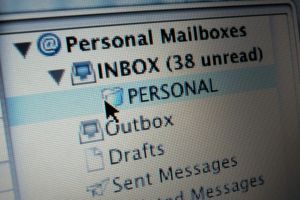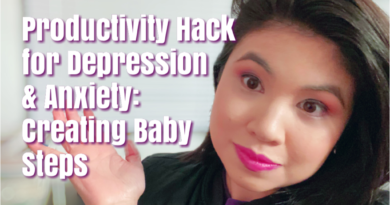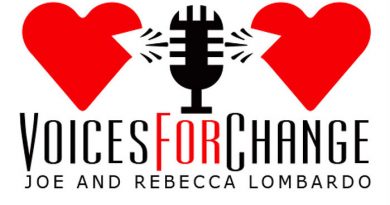5 Ideas: How To Get Stuff Done When You’re Depressed

Did you know that by the year 2020, the World Health Organization says depression will be the second greatest disability in the world (second only to blindness)? Because I’ve lived with bipolar disorder my whole life (diagnosed at 18 after a friend’s suicide) and worked in mental health nonprofit for years, I am not surprised. When you’re depressed, each task requires energy. Answering an inbox full of emails is intimidating. Having bipolar 2, I sometimes wish there was a “pause” button I could hit when things get rough. Fortunately and unfortunately, life goes on when you’re depressed. I first started honing strategies to combat depression’s effects on productivity when I was a student. In college, I battled bipolar disorder and polycystic ovarian syndrome. I was fortunate to graduate from Northwestern University cum laude with two majors despite my obstacles. All these years later, I also live with Myasthenia Gravis, asthma, and psoriasis. Some of the techniques I learned for working despite depression now help me with my daily physical pain and fatigue.
5 Ways To Get Stuff Done When You’re Depressed:
1. Classify Tasks According to Level of Difficulty: I classify the things I have to do as a 1, 2, or 3 where 1 = easy, 2 = moderately difficult, and 3 = hard. If I’m depressed, I focus on all the 1-level tasks first like showering and eating breakfast. As I cross off 1-level things on my list, I build up enough confidence to tackle 2 and 3-level tasks like responding to emails, writing articles, or preparing lesson plans.
2. Schedule an Appointment With Your Therapist ASAP: I try my best to catch my depressive episode at the beginning, before it gets out of hand. (Using bipolar mood charts help me with this.) Of course, it can be hard to do that every time and sometimes I miss. Mental illness, like any illness, can be unpredictable. But, if you’re already well into a depressive episode, seeing a therapist is still a good idea.
3. Prioritize Tasks: Filter tasks according to urgency. I usually make a “to-do list” every night for the next day. I put 4 **** to tasks that must be finished immediately. 3 *** are for tasks that must be finished the next day. 2 ** means a task must be finished sometime this week. 1 * means it’s due next week. When I’m depressed, I ignore tasks that have two or fewer asterisks. If trying to finish a list is too daunting, highlight 3 things you want to accomplish for one day–just three things.
4. Find an Endorphin-Releasing Activity: If you’re able to exercise, exercise is one of the best tools we have in fighting stress and depression. While I continue to take prescribed medications and see my therapist, I do much better when I exercise as I blogged about in 4 Mental Health Benefits of Exercise. Of course, the conundrum is that while exercise helps depression, being depressed can make it harder to exercise. (See my article 6 Ideas: How To Exercise When You’re Depressed.) Physical activity can break the monotony of your routine. Even 15-minutes of cardio can make my difficult situation seem less insurmountable. Exercise releases endorphins, aka “the feel good hormones,” which make me feel better about myself and my life.
5. Identify Allies: “Allies” are people who will understand and help us. An ally can be a friend or a family member or a coworker who has a loved one with mental illness. 
My email response:
Hi Mike,
I’m interested in collaborating. In fact, I’d love to talk to you on the phone some time…Right now, I am going through some depression. I was in bed almost all day today. I’d like to fill out your attached questions but it won’t happen tomorrow. I will get back to you ASAP. As you know, it’s hard to balance health problems with a job…–Jessica
Hi Jessica,
I’m sorry to hear that you are going through a rough time. My cell is below…Please feel free to call whenever and fill out the sheet when the time is right. If you’d like to call this week, I’ll be available after 3pm EST each day. Take care of you.
Related: Short MSNBC Documentary featuring my life
–Your Stylist, Jessica Gimeno




